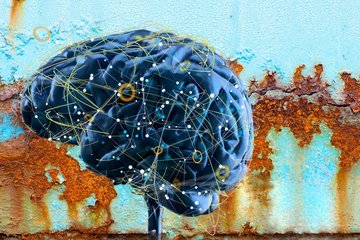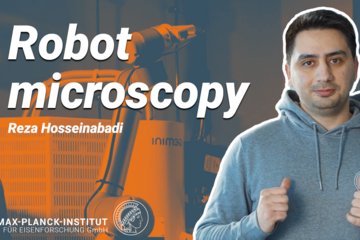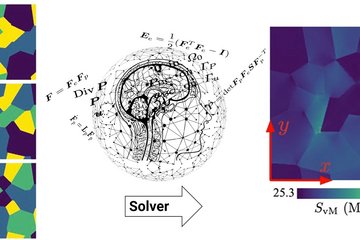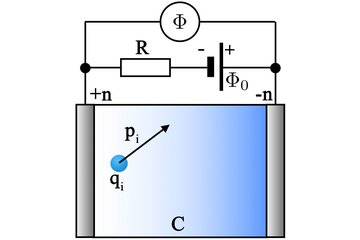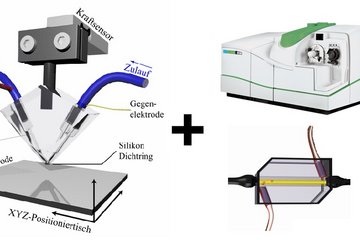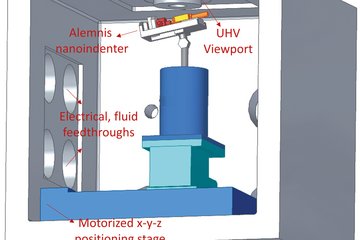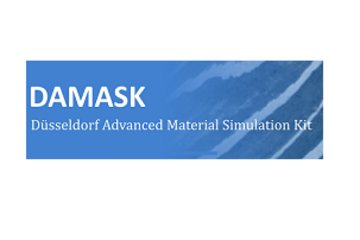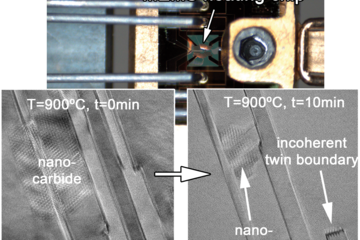All genres
1441.
Talk
Nanostructure Manipulation by Segregation Engineering. George Smith Symposium on Atom Probe Tomography, Oxford, UK (2014)
1442.
Talk
Glass vs. crystal: Element-resolved corrosion analysis of gradually devitrified Fe-based alloys. Talk at University of Göttingen, Göttingen, Germany (2014)
1443.
Talk
Fossilized shark teeth versus their recent counterparts: An in-depth comparison. DGM Bio-inspired Materials: International Conference on Biological Material Science, Potsdam, Germany (2014)
1444.
Talk
Synthetic dental composite materials inspired by the hierarchical organization of shark tooth enameloid. Third winter school within the DFG priority programme 1420 "Biomimetic Materials Research: Functionality by Hierarchical Structuring of Materials", Potsdam, Germany (2014)
1445.
Talk
Atom Probe Tomography and Correlative TEM/APT at the MPIE. Inauguration of the Atom Probe at the Institute for Physics IA at the RWTH Aachen, Aachen, Germany (2014)
1446.
Talk
Nanostructure Manipulation by Segregation Engineering. 2nd ESISM International Workshop on Fundamental Issues of Structural Materials, Kyoto, Japan (2014)
1447.
Talk
Coupled experimental-numerical Analysis of Microstructures. DGM Arbeitskreissitzung Mikrostrukturmechanik, Freiberg, Germany (2014)
1448.
Talk
High Throughput Quantification of Grain Boundary Segregation by Correlative TEM and APT. TMS 2014, Solid-State Interfaces III Symposium, San Diego, CA, USA (2014)
1449.
Talk
Atomic scale understanding of 7 GPa ultra-high strength pearlite. TMS 2014 - Mechanical Behavior Related to Interface Physics II Symposium, San Diego, CA, USA (2014)
1450.
Talk
Integrated experimental-numerical methodology to investigate plasticity in bulk nanostructured alloys. DGM Arbeitskreis Sonde, Düsseldorf, Germany (2014)
1451.
Talk
Strain and stress partitioning in ultrafine grained ferrite/martensite steel. TMS 2014, San Diego, TX, USA (2014)
1452.
Talk
Microstructure, phase stability and mechanical behavior of non-equiatomic FeMnNiCoCr high entropy alloys. TMS 2014, San Diego, TX, USA (2014)
1453.
Talk
Influence of oxygen and cold deformation on the ω phase formation in gum metal. TMS 2014, San Diego, TX, USA (2014)
1454.
Talk
Exploring nanotwinned structures in advanced high-Mn steels. International Symposium on Plasticity 2014, Freeport, BS, USA (2014)
1455.
Talk
Atom Probe Tomography and Correlative TEM/APT at the MPIE. Mini-Symposium Atom Probe Tomography, National APT Facility Eindhoven, TU Delft, Delft, The Netherlands (2014)
1456.
Talk
High Throughput Quantification of Grain Boundary Segregation by Correlative Transmission Electron Microscopy and Atom Probe Tomography. International Conference on Atom Probe Tomography & Microscopy 2014, Stuttgart, Germany (2014)
1457.
Talk
Advances in Analysis of 3D Orientation Data Sets Obtained by FIB-EBSD Tomography. 2nd International Congress on 3D Materials Science 2014, Annecy, France (2014)
1458.
Talk
GND Analysis of a Copper Micro Cantilever Beam. Arbeitskreis EBSD 2014, Düsseldorf, Germany (2014)
1459.
Talk
Correlation of composition and structure of shark teeth. 23rd Biomaterials in Medicine and Veterinary Medicine Conference, Rytro, Poland (2014)
1460.
Talk
Dislocation density distribution around an wedge indent in single- crystalline nickel: Comparing non-local crystal plasticity finite element predictions with experiments. 11th World Congress on Computational Mechanics (WCCM XI) and 5th European Conference on Computational Mechanics (ECCM V)
, Barcelona, Spain (2014)


